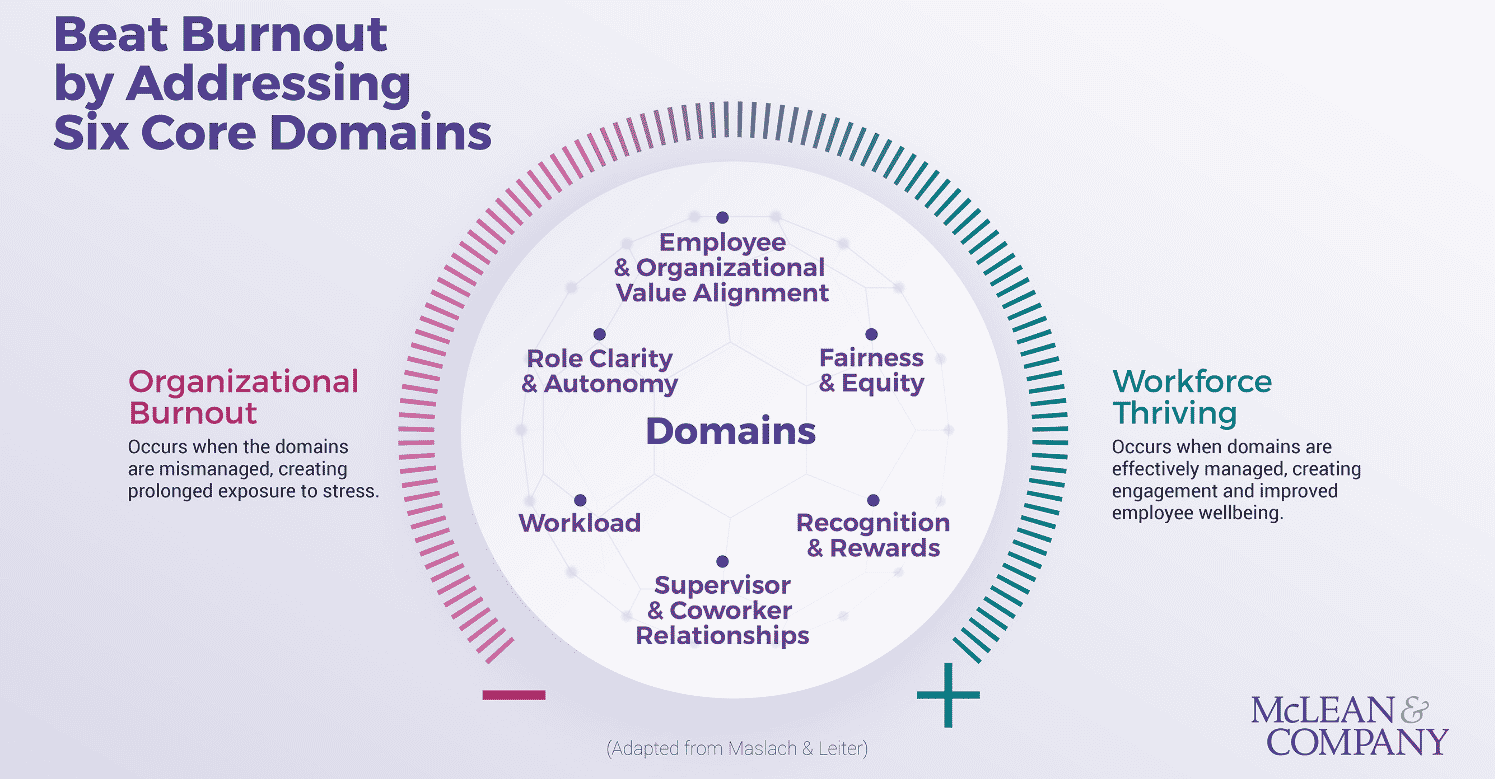New research from HR and leadership professionals network McLean & Company is designed to help business and HR leaders implement a multilevel approach to address and minimize burnout across their organizations, with the goal of creating a post-pandemic future without burnout at a time when global concern about employee burnout is at a record high.
The findings of the firm’s new report, Plan to Extinguish Organizational Burnout, are particularly concerning when we take into account that employees who consider their work stress levels to be manageable are 3.7 times more likely to be engaged at work.
“Common approaches to remedying burnout focus primarily on the individual’s responsibility to solve the issue of feeling burnt out, like practicing yoga or taking additional time off,” said Kelly Berte, director of HR research & advisory at McLean & Company, in a news release. “While these approaches have value, they’re only a temporary coping method. Today, 60 percent of HR professionals indicate they are experiencing higher levels of work stress compared to three years ago, as highlighted in McLean and Company’s 2022 HR Trends Report.”
The new research states that the common causes of burnout, adapted from Maslach & Leiter, fall under six core domains:
-
Workload
The number and complexity of work-related tasks or processes that require physical, mental, or emotional effort and are influenced by time pressures.
-
Role clarity and autonomy
The degree to which employees understand their job responsibilities, have control over how their work is completed, and feel they have adequate resources or training to succeed.
-
Supervisor and coworker relationships
Internal relationships and the extent to which they promote mutual support, bidirectional communication, and cooperation.
-
Rewards and recognition
Monetary and non-monetary rewards that result in employees feeling valued and recognized for their personal contributions to the organization.
-
Fairness and equity
The perceived fairness of organizational processes and policies, such as work assignments, promotions, and pay increases.
-
Employee and organizational values
The perceived connection between an employee’s work responsibilities and goals and the organization’s mission/vision/values.
“To escape the infinite cycle of employees re-experiencing burnout, organizations need to shift the focus of burnout solutions from individual responsibility to the organizational level,” Berte added. “It’s here that root causes are addressed and norms that promote employee health and wellbeing are fostered.”
To address these domains of burnout, the firm suggests following its three-step plan:
1. Identify root causes of burnout
Identify key roles and responsibilities in evaluating and addressing burnout. This includes gathering existing internal data to assess the current state of burnout and using McLean & Company’s Burnout Questionnaire, then considering the data by employee segment to identify high-priority groups. Conducting focus groups to capture employee voice and identifying priority root causes of burnout and their associated goals and metrics are also critical.
2. Tailor solutions to address root causes of burnout
Explore solutions across the six burnout domains and create a shortlist based on employee needs and organizational resourcing constraints. Consult with stakeholders to finalize a list of solutions and, finally, create a roadmap to outline solution implementation and plan for the change management process.
3. Create a future with minimal burnout
Revise organizational policies and programs to identify gaps and opportunities for minimizing burnout. Equip managers with the tools and training they need to identify and minimize burnout within their teams and develop a communication plan to promote solution uptake. Then create a plan to reevaluate and monitor organizational burnout.
The research emphasizes that assessing burnout is an ongoing process, not a one-time effort. Triggers and signs of burnout will continuously surface across the workforce, creating the need for continuous reevaluation and iteration of solutions.









